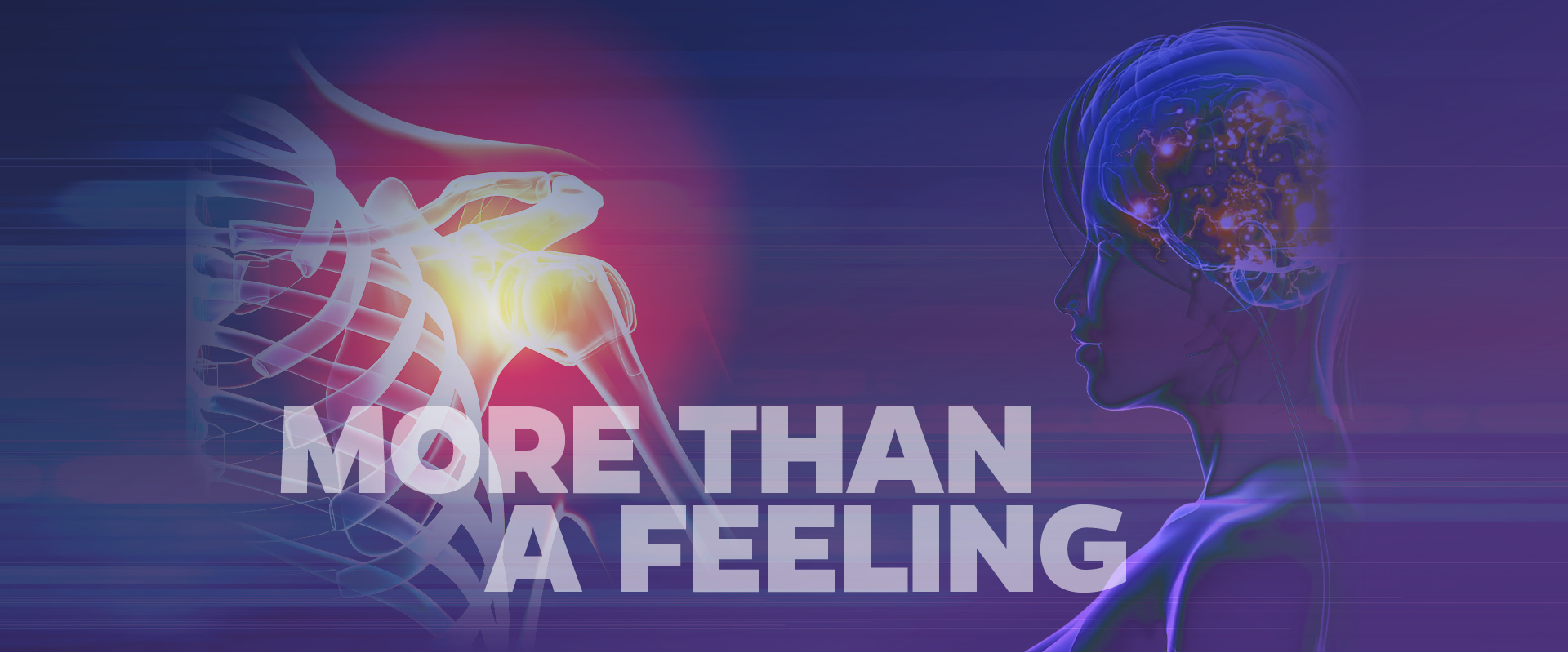 HHP - Update me in site_config > General Configuration
HHP - Update me in site_config > General Configuration

“If you can visualize it, we can make it better.” This is what associate professor of applied physiology and kinesiology Stephen Coombes, Ph.D., hopes that his research into movement pain will eventually be able to accomplish.
According to Dr. Coombes, pain typically develops as a way to protect the body from injury. Most pain goes away after an injury heals, but chronic pain develops when the body’s response to an injury lasts much longer than it should.
Chronic pain plagues over 100 million Americans, nearly half of the nation’s population. This pain is often very difficult to treat and can lead to depression and other negative mental health outcomes.
“Normally, pain tells us to do protective actions for our bodies, like temporarily resting,” Coombes said. “With chronic pain, our body is telling us to do something that may not be logical, like not getting out of bed for weeks or months.”
Coombes became interested in pain research during his undergraduate studies and was always interested in how various factors contribute to pain when we move. During the course of his career, he became curious if there was a way that health care providers could learn more about the pain that their patients feel.
“As of now, there isn’t really a way to verify if something hurts,” Coombes said. “The only way to know if someone feels pain is to ask them directly.”
Doctors currently take this approach when dealing with patients, he said. But Coombes and his team are working in their lab to determine how changes in the brain could help health care providers visualize pain during movement.
The lab is attempting to use brain biomarkers as a way to visualize chronic pain. According to Coombes, measuring the brain’s responses during movement-triggered chronic pain could provide a biological indicator, evidence that a patient’s pain exists.
“We know this pain is real, we just don’t have evidence of it from a biological basis,” Coombes said. “Either the pain is coming from somewhere else, or we don’t have the right ‘camera’ to capture it.”
The ‘camera’ that Coombes speaks of may be the MRI and EEG used to scan participants’ brains as part of the team’s research. These individuals are told to make movements that aggravate their chronic pain in an effort to visualize whether the brain gave any indication of what they were feeling.
The team also uses a heating device to simulate another source of pain, in coordination with or separate from a participant’s movements. According to Coombes, this allows the lab to attempt to see if the same effect can be replicated in the absence of chronic pain.
Each person feels pain differently, even when exposed to the same stimuli, but researchers still have difficulty determining why this is the case, Coombes said. Using biomarkers could provide a needed breakthrough.
“If we can have a biological representation of pain, we can change the parameters,“ Coombes said. “This could help us understand why a patient rates their pain the way that they do.”
The lab is also testing interventions like spinal cord stimulation that could help with specific types of pain.Spinal cord stimulation uses a device implanted in the body to send low-level electrical signals to nerve cells. This technique blocks pain signals from reaching the brain, preventing the body from feeling pain, according to one hypothesis.
In the team’s lab trials, patients participate in a virtual reality reaching test while the spinal stimulus is applied, making movements associated with back pain at the same time. Coombes believes that the spinal stimulus may result in a similar ‘pain-silencing’ effect.
According to Coombes, previous clinical trials that used this stimulation showed potential to ease chronic back pain, but it remains unclear why this treatment is effective.
“We’re not sure why it works at the moment,” said Coombes. “But the interactions of this treatment’s signals with the brain may help us explain where this pain comes from in the first place.”
Coombes and his team believe that further research could speed the development of treatment options that could not only help patients express what they are feeling, but also ease their pain.
“You can’t move without a brain,” Coombes said. “If we can find a way to put the brain and how we move together, we might be able to shine a light on this phenomenon.”
read more >>